Abouzar Estebsari
Non-Intrusive Load Monitoring (NILM) using Deep Neural Networks: A Review
Jun 08, 2023



Abstract:Demand-side management now encompasses more residential loads. To efficiently apply demand response strategies, it's essential to periodically observe the contribution of various domestic appliances to total energy consumption. Non-intrusive load monitoring (NILM), also known as load disaggregation, is a method for decomposing the total energy consumption profile into individual appliance load profiles within the household. It has multiple applications in demand-side management, energy consumption monitoring, and analysis. Various methods, including machine learning and deep learning, have been used to implement and improve NILM algorithms. This paper reviews some recent NILM methods based on deep learning and introduces the most accurate methods for residential loads. It summarizes public databases for NILM evaluation and compares methods using standard performance metrics.
Sequence-to-Sequence Model with Transformer-based Attention Mechanism and Temporal Pooling for Non-Intrusive Load Monitoring
Jun 08, 2023



Abstract:This paper presents a novel Sequence-to-Sequence (Seq2Seq) model based on a transformer-based attention mechanism and temporal pooling for Non-Intrusive Load Monitoring (NILM) of smart buildings. The paper aims to improve the accuracy of NILM by using a deep learning-based method. The proposed method uses a Seq2Seq model with a transformer-based attention mechanism to capture the long-term dependencies of NILM data. Additionally, temporal pooling is used to improve the model's accuracy by capturing both the steady-state and transient behavior of appliances. The paper evaluates the proposed method on a publicly available dataset and compares the results with other state-of-the-art NILM techniques. The results demonstrate that the proposed method outperforms the existing methods in terms of both accuracy and computational efficiency.
Electricity Price Forecasting Model based on Gated Recurrent Units
Jul 28, 2022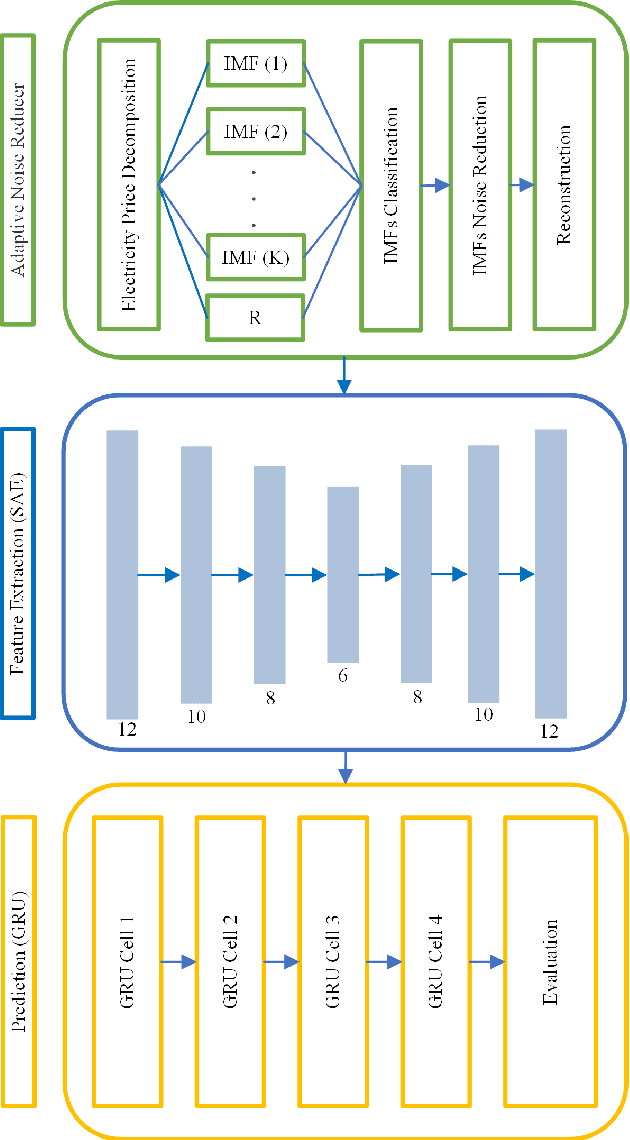
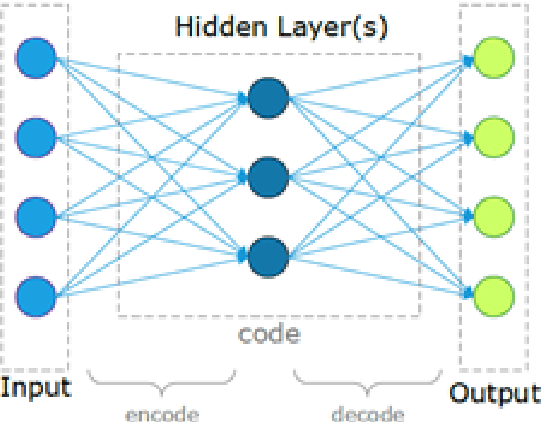
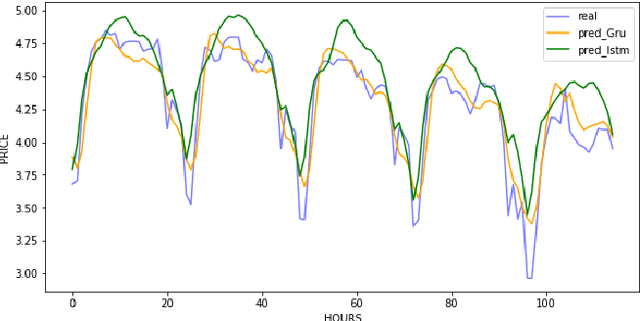

Abstract:The participation of consumers and producers in demand response programs has increased in smart grids, which reduces investment and operation costs of power systems. Also, with the advent of renewable energy sources, the electricity market is becoming more complex and unpredictable. To effectively implement demand response programs, forecasting the future price of electricity is very crucial for producers in the electricity market. Electricity prices are very volatile and change under the influence of various factors such as temperature, wind speed, rainfall, intensity of commercial and daily activities, etc. Therefore, considering the influencing factors as dependent variables can increase the accuracy of the forecast. In this paper, a model for electricity price forecasting is presented based on Gated Recurrent Units. The electrical load consumption is considered as an input variable in this model. Noise in electricity price seriously reduces the efficiency and effectiveness of analysis. Therefore, an adaptive noise reducer is integrated into the model for noise reduction. The SAEs are then used to extract features from the de-noised electricity price. Finally, the de-noised features are fed into the GRU to train predictor. Results on real dataset shows that the proposed methodology can perform effectively in prediction of electricity price.
Short-Term Load Forecasting Using Time Pooling Deep Recurrent Neural Network
Sep 26, 2021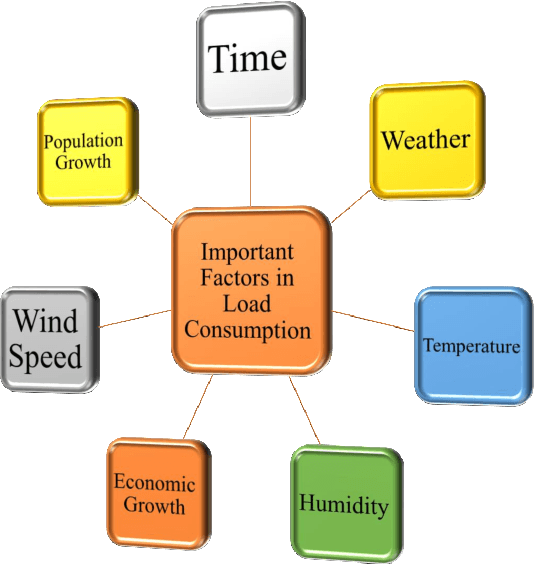
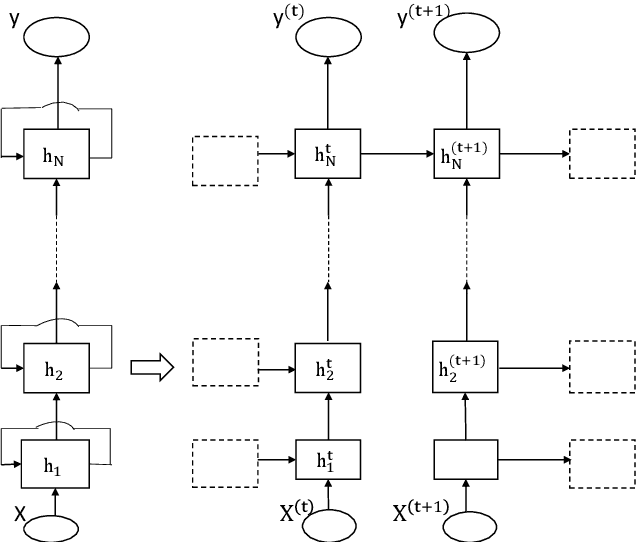
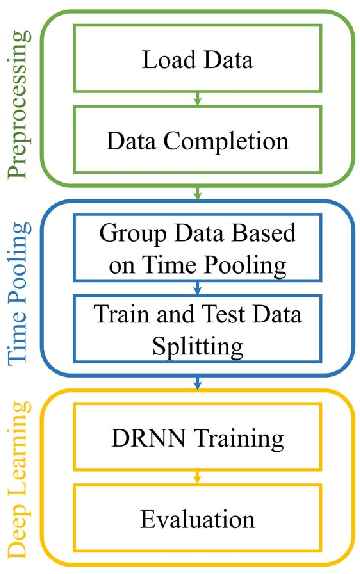
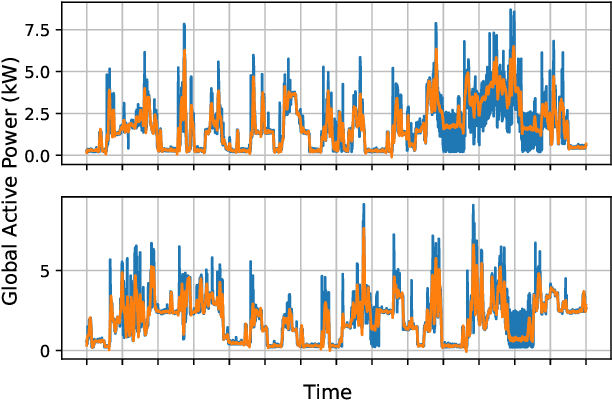
Abstract:Integration of renewable energy sources and emerging loads like electric vehicles to smart grids brings more uncertainty to the distribution system management. Demand Side Management (DSM) is one of the approaches to reduce the uncertainty. Some applications like Nonintrusive Load Monitoring (NILM) can support DSM, however they require accurate forecasting on high resolution data. This is challenging when it comes to single loads like one residential household due to its high volatility. In this paper, we review some of the existing Deep Learning-based methods and present our solution using Time Pooling Deep Recurrent Neural Network. The proposed method augments data using time pooling strategy and can overcome overfitting problems and model uncertainties of data more efficiently. Simulation and implementation results show that our method outperforms the existing algorithms in terms of RMSE and MAE metrics.
 Add to Chrome
Add to Chrome Add to Firefox
Add to Firefox Add to Edge
Add to Edge